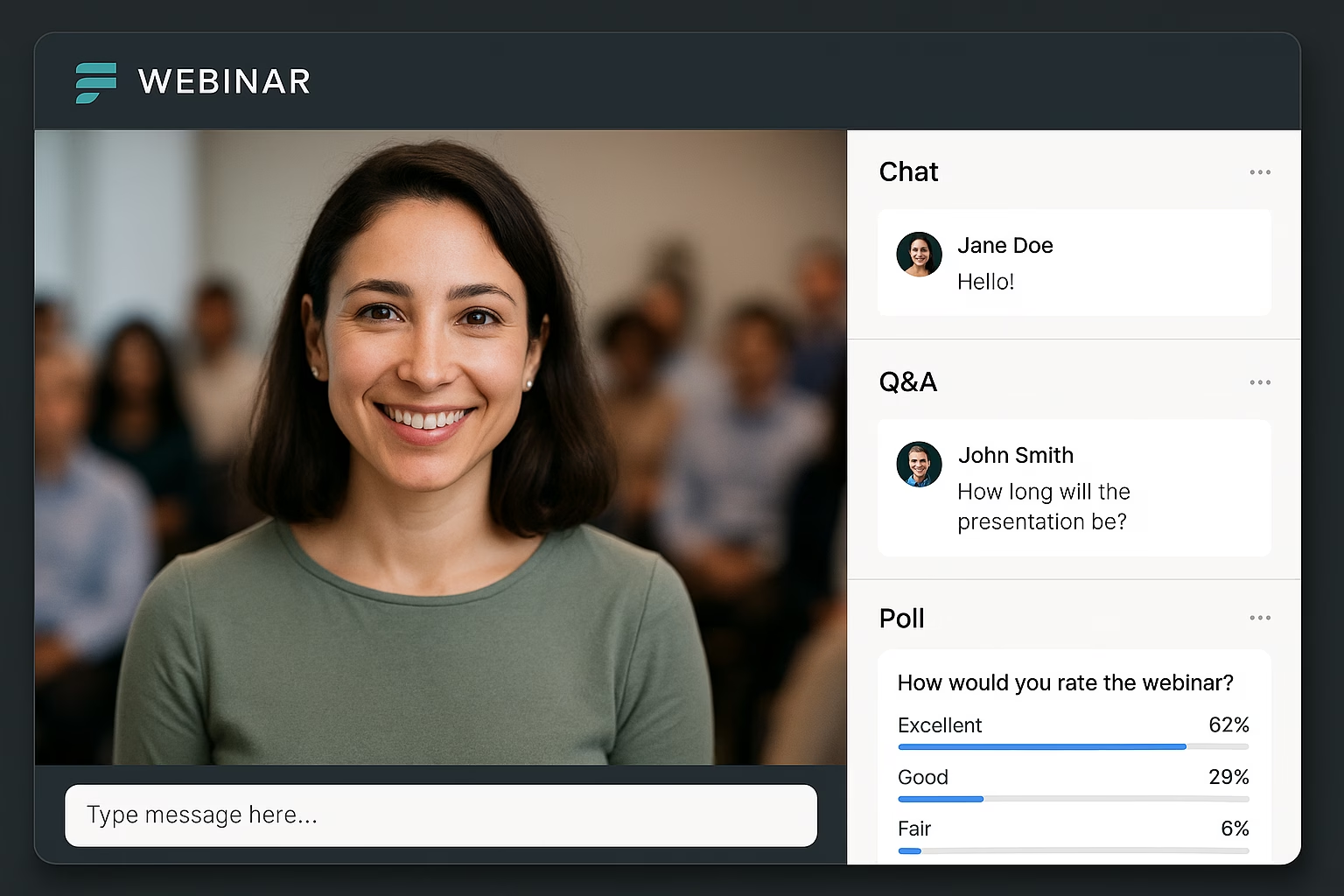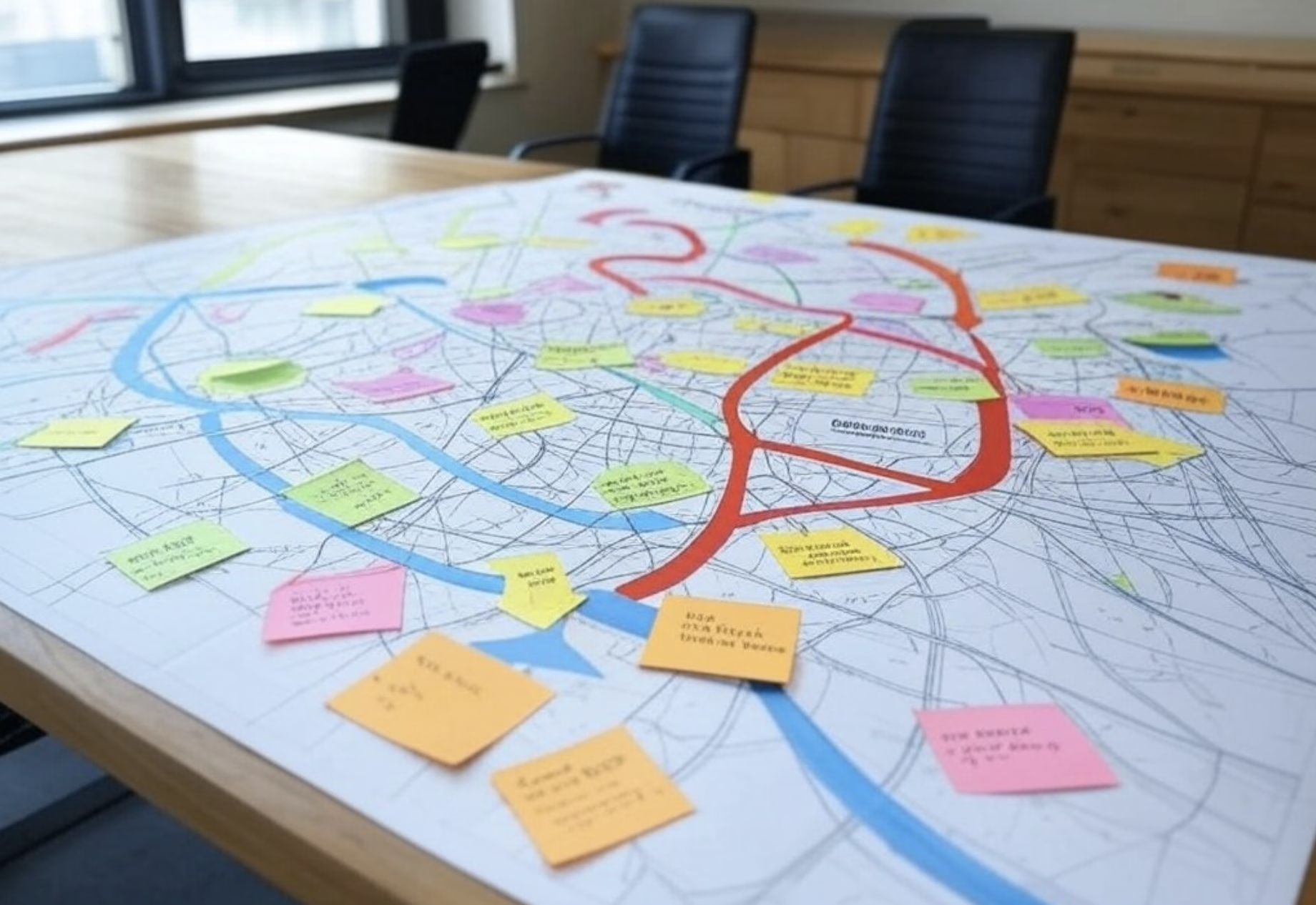By Martin H. Morrissette, Sirocco CMO – Book time with me
Pardon our French here, but we know from experience that few things are more frustrating than having a team of brilliant, capable people and still watching project deadlines slip through your fingers. It’s a common challenge: despite everyone’s best efforts, progress stalls, and those crucial goals feel just out of reach. So, what’s the answer? This guide tackles the roadblocks that keep projects stuck, offering practical, actionable strategies for leaders looking to reignite drive. From setting a clear vision and empowering decision-makers to building momentum with quick wins, these insights are designed to help you bring your projects over the finish line (without losing your mind in the process). Let’s dive right in.
A team of experts, yet no progress
As a leader, you know the frustration all too well: your team of experts, each a highly skilled professional, should be making strides forward on a critical project. Yet, despite their expertise, the project feels like it’s stuck in neutral, deadlines loom closer, and the weight of stalled progress hangs over everyone’s shoulders. So, what can be done to overcome these roadblocks, ignite momentum, and drive the project forward?
One of the first hurdles to project momentum often lies in team alignment. A project that lacks a shared understanding of its ‘why’ can quickly fall apart, with each team member interpreting goals differently and working at cross-purposes. For instance, a study from Forbes highlights that teams with a clear, defined mission are 20% more likely to succeed, reinforcing the importance of aligning on the end goal from the start.
Defining the project’s overarching purpose and the positive impact it will have keeps everyone focused. A kickoff workshop can be a valuable way to bring everyone together, clarify objectives, and establish a mutual understanding of the project’s importance. It’s also essential to break down these goals into specific, achievable milestones, making progress measurable and giving the team tangible targets to work toward. Regular communication, too, cannot be underestimated; frequent updates and transparent adjustments along the way keep everyone connected and prevent misalignment.
Beyond alignment, fostering engagement is essential. Team members are more motivated when they feel their work makes a genuine impact and that their contributions are valued. Providing insight into the bigger picture, e.g. how each person’s role supports the project’s goals and the organization’s broader mission, can deepen this sense of purpose. Including team input in decision-making (where appropriate) also reinforces their importance to the project and encourages a sense of ownership. And never underestimate the power of appreciation; recognising efforts and showing gratitude for their hard work builds morale and commitment, helping each team member feel valued and inspired to give their best.
Embracing Agile principles
Maybe you’ve heard us mention Agile once or twice before. It is, after all, Sirocco’s preferred way of working. Agile methodologies have become widely embraced for good reason: they enable flexibility, maintain momentum, and keep teams adaptive, especially in complex projects where change is constant. By breaking down work into shorter, focused sprints, Agile allows teams (including ours) to deliver functional increments without waiting for the whole project to be ‘perfect.’ This iterative approach means there’s room for continuous improvement, with each sprint providing an opportunity to reflect, recalibrate, and make course corrections. According to recent data, Agile adoption has surged by over 37% in recent years, with teams reporting significant gains in efficiency and faster time-to-market, proving its effectiveness across industries.
One of Agile’s standout strengths is its emphasis on frequent feedback loops, which allow teams to identify issues early and prevent minor problems from becoming major roadblocks. These feedback cycles foster an environment where teams can respond dynamically to new information, whether it’s evolving client requirements, market changes, or internal adjustments. This adaptability helps keep projects on track, even when unforeseen challenges arise.
Agile also drives cross-functional collaboration, bringing together individuals from different areas of expertise to find innovative and comprehensive solutions. By working across functions, team members are exposed to a variety of perspectives, breaking down silos and promoting knowledge sharing. This collaborative approach ensures that everyone has a stake in each sprint’s outcome, enhancing accountability and commitment across the board.
That said, Agile adoption can present challenges for teams unfamiliar with its iterative, non-linear approach. For those accustomed to traditional project methods, the shift to Agile may initially feel disorienting. To support a smooth transition, gradual implementation (accompanied by Agile training sessions) can help teams build confidence and see the benefits of incremental progress. Over time, as team members experience Agile’s value firsthand, they become more comfortable with the process and better equipped to leverage Agile for long-term success. When implemented thoughtfully, Agile not only improves productivity but also fosters a culture of continuous learning, resilience, and responsiveness – all invaluable qualities.
Fostering purpose-driven meetings and workshops
Workshops are a powerful tool for fostering collaborative problem-solving, sparking new ideas, and building consensus around challenging decisions. However, they work best when used selectively and with clear objectives—without these, they can easily devolve into lengthy discussions that hinder progress rather than accelerate it. One pitfall to watch out for is “analysis paralysis,” where the team becomes so focused on analyzing every detail that they struggle to make decisive, forward-moving choices. Keeping workshops concise and purpose-driven can prevent this, helping participants stay focused on actionable outcomes.
The mix of participants is also critical; bringing together a balanced blend of subject-matter experts, decision-makers, and even fresh perspectives from outside the immediate project team can add valuable insights. To get the best out of diverse personalities, a skilled facilitator can make a big difference. Techniques like structured turn-taking or asking open-ended questions to quieter participants can ensure that everyone, from assertive speakers to more reflective thinkers, contributes their insights. This approach prevents dominant voices from taking over and allows more reflective team members to share ideas that might otherwise go unheard.
A facilitator can also time-box activities within the workshop, which encourages participants to stay focused and avoid drifting into analysis paralysis. For instance, limiting brainstorming sessions to 10 or 15 minutes per topic ensures that discussions remain targeted and that each idea is geared toward practical solutions. By managing these dynamics, the facilitator can create a workshop environment that captures the best ideas and perspectives from each participant while sustaining progress and keeping the path forward clear.
Empowering decision-makers to maintain momentum
Unclear decision-making authority is one of the main reasons projects lose momentum. When team members lack clarity about who is responsible for what, delays are inevitable as they wait for approvals. Giving individuals decision-making authority in their domains is a critical step in eliminating bottlenecks and streamlining workflows. Clarity around roles also fosters autonomy. In Agile environments, teams thrive when trusted to make informed decisions aligned with the project’s goals. For example, empowering a technical lead to make scope adjustments ensures that minor issues don’t escalate into larger delays. A Harvard Business Review article suggests that distributed decision-making builds resilience within teams, allowing them to respond quickly to unexpected challenges.
Quick wins are a proven motivator, boosting team morale and creating forward momentum. Research shows that achieving small, early successes can significantly boost motivation, as team members feel a sense of accomplishment that drives them to tackle the next task. McKinsey reports that project teams achieving early wins demonstrate more resilience and perform better on complex challenges in later stages. Early wins could be as simple as completing an initial task or resolving a minor issue, but each one contributes to an atmosphere of progress. Recognising and celebrating these achievements reinforces team morale and keeps spirits high, especially when the project has significant complexity. The key is to maintain balance, ensuring that quick wins don’t compromise quality by fostering a ‘rush’ mentality. By carefully selecting smaller tasks that still hold strategic importance, leaders can build momentum without sacrificing the project’s integrity.
Leveraging technology for effective collaboration
When thoughtfully applied, technology can be a powerful catalyst for productivity, driving efficiency and strengthening team cohesion. Project management platforms like Jira, Asana, and Trello give teams the ability to track progress in real-time, organise tasks, and assign responsibilities, so every team member has a clear view of who is doing what and when. This transparency not only keeps everyone accountable but also helps identify potential bottlenecks early, allowing teams to address them before they impact timelines.
Collaboration tools like Slack, Microsoft Teams, or Google Workspace further support productivity by enabling smooth, instant communication across teams, departments, and even time zones. With these tools, team members can collaborate on demand, share files effortlessly, and quickly resolve issues as they arise, keeping the flow of work uninterrupted. For remote or distributed teams, these platforms recreate the immediacy of in-person communication, bridging physical distance and enabling a more connected, engaged team dynamic.
However, it’s important to strike a balance. Relying on too many tools can lead to “tool fatigue,” where managing multiple platforms becomes a burden, consuming time and causing frustration. Studies show that up to 30% of employees report feeling overwhelmed by the number of tools they’re expected to manage, which can detract from productivity rather than enhance it. Leaders play a key role here by curating an optimised tech stack that focuses on high-impact tools that genuinely add value and streamline workflows. Consolidating to a select few, essential platforms reduces redundancy and allows teams to fully leverage the tools they do use. By refining tool usage, teams spend less time on administrative tasks and more time engaging in meaningful, productive work, resulting in a more efficient and cohesive project flow.
Maintaining regular check-ins and feedback loops
Consistent check-ins provide a structure for discussing progress, addressing blockers, and planning the next steps. Short, frequent meetings like daily stand-ups or weekly retrospectives create an environment of continuous alignment, ensuring that all team members are up-to-date on priorities and obstacles. These check-ins are an essential part of the Agile methodology, with SAFe recommending brief but regular meetings to enable quick adjustments.
Routine check-ins can become burdensome if not handled efficiently. To prevent this, keep them tightly focused on essentials – progress, blockers, and immediate next steps – without digressing into unrelated topics. Weekly retrospectives, for example, offer a chance to look back on the previous week’s achievements and challenges, capture lessons learned, and plan improvements for the coming cycle. By maintaining this rhythm, leaders can ensure that the project progresses consistently and that small issues don’t escalate into larger problems.
Overcoming roadblocks: A leader’s role in project acceleration
Effective project leadership is about more than just managing timelines and resources; it’s about knowing how to handle common roadblocks and keeping teams motivated and focused. Clarity of vision, empowered decision-making, and a steady flow of achievable goals are critical to unlocking a project’s potential and bringing it to successful completion. When projects feel stagnant and deadlines loom, taking a proactive approach to empower, align, and motivate your team can make all the difference.
Sirocco is here to support leaders in achieving their project goals. Our experts work with you to implement tailored strategies that accelerate progress, ensuring that every project is equipped with the tools and insights needed to succeed. Book a meeting with us today to discover how we can help bring your projects over the finish line and get sh*t done. Want to chat about your projects? Let’s get some time on our calendars!










